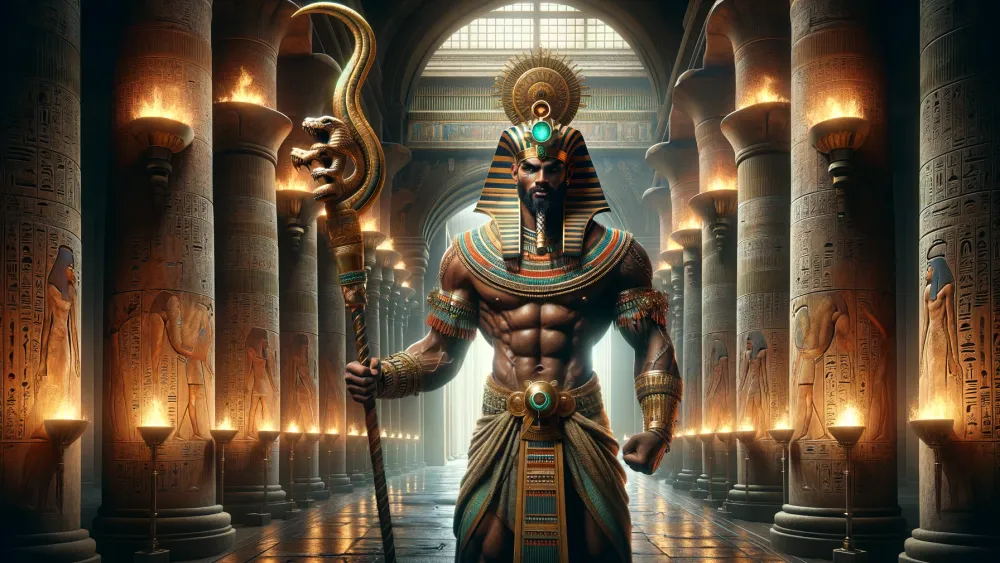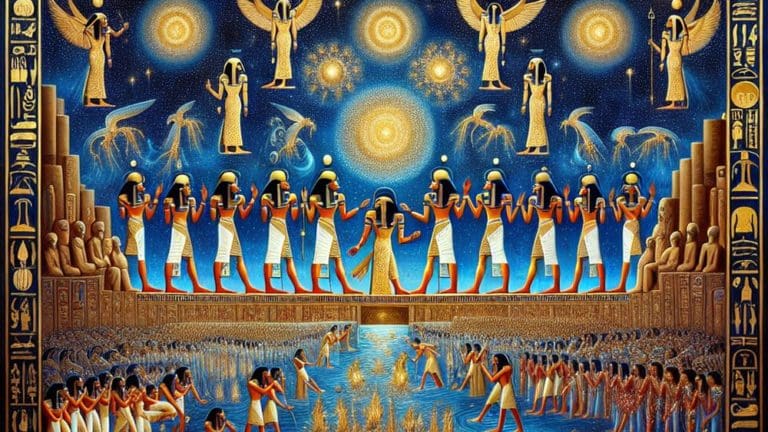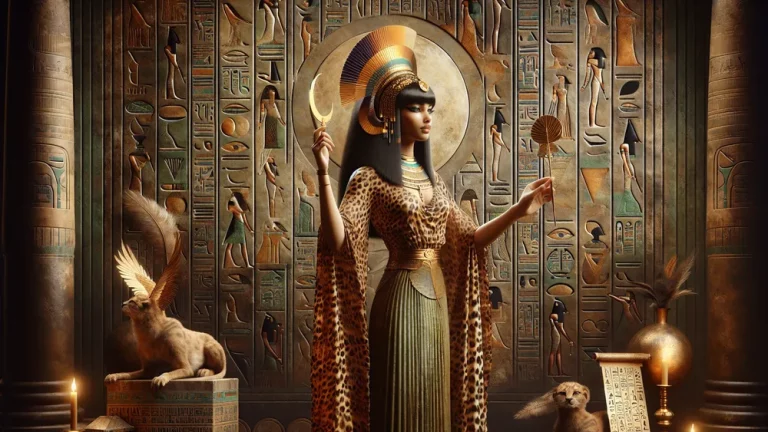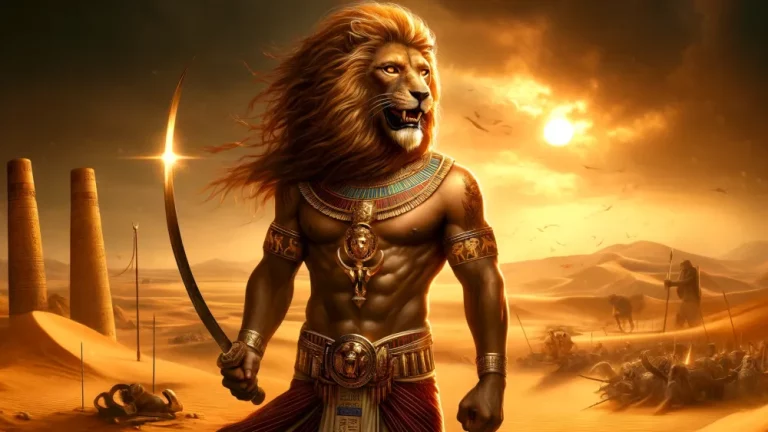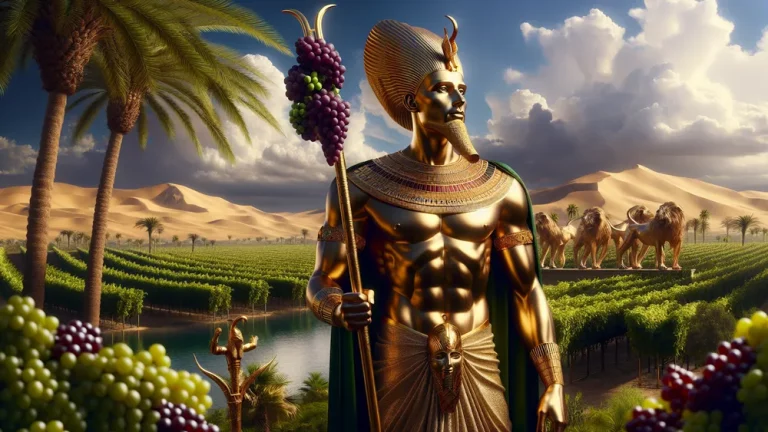Reshep: Syrian War And Healing Deity In Egypt
Despite being an ancient deity, Reshep’s story is pretty intriguing because he was seen as both a god of war and a healer. He was worshipped in places like Syria, Egypt, and Mesopotamia, and his unique mix of roles has caught the interest of many historians.
Key Points:
- Reshep was an ancient deity worshipped for both war and healing.
- Reshep’s name comes from the Semitic root r-š-p related to fire and burning.
- Reshep was mentioned in Eblaite and Ugaritic texts as a god of war and plague.
- Reshep was integrated into Egyptian and Mesopotamian mythologies, adapting to different roles.
- Reshep was often linked with other deities like Nergal and Baal through syncretism.
- Reshep was worshipped in various regions with different rituals and ceremonies.
- Reshep’s legacy continued in Egyptian mythology and possibly influenced the worship of Yahweh.
This blog post will dive into where Reshep came from, how he was mentioned in old texts, and why he was important in different cultures. By looking at how Reshep was seen in various regions and times, especially how he fit into Egyptian mythology, we can get a better idea of how ancient religions mixed and changed.
Historical Background of Reshep
Given that we want to understand Reshep better, we should check out where he came from and how his story changed over time. So, let’s dive into his origins and what his name means.
Origins and Etymology of Reshep
While the name “Reshep” might sound mysterious, it actually has some interesting roots and meanings. It’s thought to come from the Semitic root “r-š-p”, which is linked to fire or burning. This possibly ties Reshep to things like war and plague.
There are different ways his name shows up in old texts, like “Rashap,” “Resheph,” and “Rasap.” These variations come from the different languages of the regions where people worshipped him. Understanding the name’s background helps us see why Reshep was seen as both a destroyer and a protector.
As for where Reshep first appeared, we can find early mentions of him in Eblaite and Ugaritic texts. Eblaite texts (from around the third millennium BCE) talk about Reshep possibly being connected to war and disease. Ugaritic texts (from the second millennium BCE) give us more details, showing him as a god of war and plague.
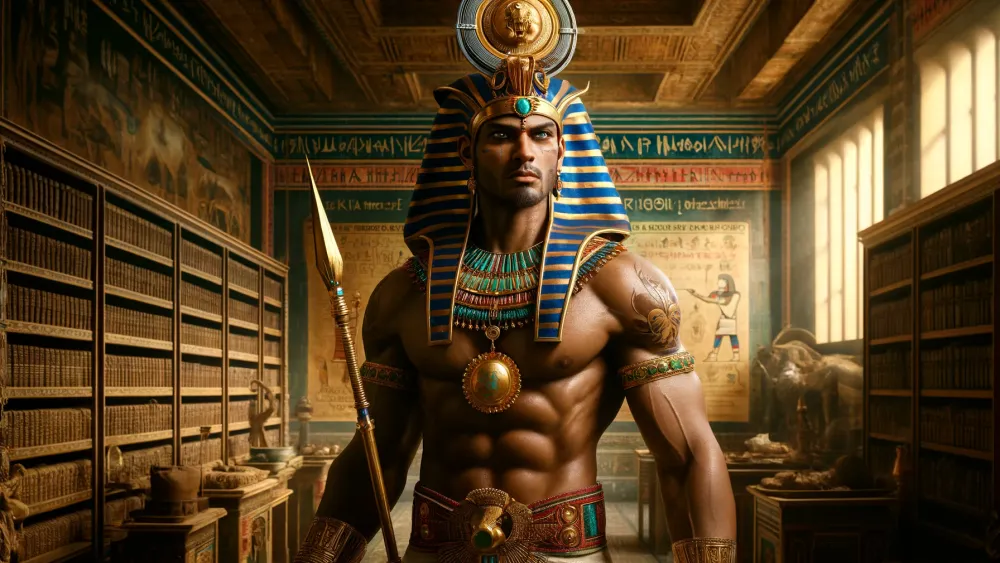
Over time, Reshep’s role changed, and he became part of the religious beliefs in other cultures, like Egypt. This change shows how ancient religions were flexible, letting deities be adapted and reimagined in different societies. Some key points about Reshep’s origins:
- Early mentions in Eblaite texts (around the third millennium BCE).
- Important references in Ugaritic texts (second millennium BCE).
- Shifted from a local god to one worshipped in various cultures.
Reshep in Ancient Texts
In particular, Reshep pops up in several Egyptian texts and inscriptions. For instance, you can find him in the “Coffin Texts” and the “Book of the Dead,” where he’s often shown as a warrior god. His role in Egyptian mythology is pretty fascinating because he was brought into their pantheon as a god of war and possibly healing.
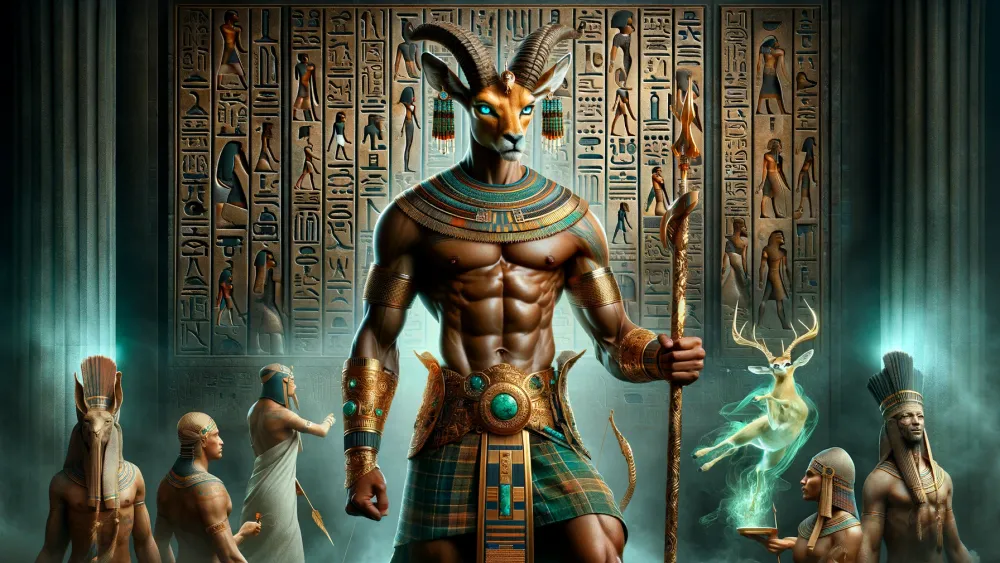
He’s usually depicted wearing a Syrian-style kilt and a helmet with a gazelle’s head, which points to his foreign roots. This shows how the Egyptians were open to adopting gods from neighboring cultures. Meanwhile, Reshep also gets mentioned in various Mesopotamian sources. In these texts, he’s often linked with other gods of war and plague, like Nergal. For example, some Akkadian texts mention Reshep alongside Nergal, showing they shared control over war and disease.
This comparison with other deities in the Mesopotamian pantheon helps us see how Reshep was viewed differently across regions. Unlike Nergal, who was mainly a god of the underworld and war, Reshep had a more dual nature, being both a bringer of plague and a healer. As for Ugaritic texts, they give us some of the earliest and most detailed mentions of Reshep.
Key texts like the “Ba’al Cycle” talk about Reshep as an important god in Ugaritic religion and mythology. In these stories, he’s often shown as a powerful god of war and pestilence, carrying a bow and arrows.
His importance in Ugaritic religion is clear from the many prayers and rituals dedicated to him, asking for his protection from disease and help in battle. These texts show just how central Reshep was to the religious life of ancient Ugarit. Key points about Reshep in ancient texts:
- Egyptian texts: “Coffin Texts,” “Book of the Dead” (shown as a warrior god).
- Mesopotamian sources: Mentioned with Nergal (shared control over war and disease).
- Ugaritic texts: “Ba’al Cycle” (important god in religion and mythology).
Role and Attributes of Reshep
Since Reshep shows up in so many ancient texts, it’s obvious he had a pretty complex role. So, let’s break down the specific attributes and roles he played in different cultures.
Reshep as a Deity of Warfare
In particular, Reshep’s link to warfare is clear through the symbols and attributes tied to him. For instance, in ancient art and stories, he’s often shown holding weapons like a bow and arrows, which point to his role as a warrior god. Plus, he’s sometimes depicted wearing a helmet with a gazelle’s head, highlighting his foreign roots and possibly his speed in battle.
These images show his fierce and protective nature, making him a key figure in war. In Egyptian art, for example, Reshep is frequently seen alongside other warrior gods, which reinforces his status as a powerful war deity. When you compare Reshep’s warlike traits with other war gods, some interesting similarities and differences pop up. For example, Nergal (a Mesopotamian god) also represents war and plague, much like Reshep.
But, Nergal is more connected to the underworld, while Reshep is more about the battlefield. On the flip side, Ares (the Greek god of war) shares Reshep’s aggressive and combative nature but doesn’t have the dual role of healer that Reshep does. These comparisons help us see where Reshep fits in the bigger picture of ancient war gods. Key points about Reshep as a deity of warfare:
- Symbols: Bow and arrows, helmet with gazelle’s head.
- Depictions: Often shown with other warrior gods in Egyptian art.
- Comparisons: Similar to Nergal (Mesopotamian god) and Ares (Greek god).
Reshep’s role as a warrior god is highlighted through his symbols, depictions alongside other warrior gods, and comparisons with Nergal and Ares, which help place him in the context of ancient war deities.
Reshep as a Deity of Plague and Healing
As for Reshep’s dual role, it’s pretty fascinating how he could be both a bringer of plague and a healer. In different myths and stories, he’s shown as a powerful god who could unleash terrible plagues on his enemies but also had the power to cure diseases and bring relief. For instance, in Ugaritic texts, people often prayed to Reshep to ward off illness and seek his protection.
These rituals usually involved offerings and special prayers asking for his healing powers. This made him a complex figure, both feared and respected by those who worshipped him. When you look at the symbols tied to Reshep, things like the bow and arrows really stand out. These weapons not only show his warlike side but also his ability to bring disease. In different cultures, these symbols were seen in various ways.
For example, in Egyptian art, the bow and arrows might highlight his role as a protector against foreign threats, while in Ugaritic culture, they could show his power over life and death. This mix of meanings shows how Reshep was viewed differently across regions, yet always as a god with a lot of influence.
| Symbol | Meaning |
|---|---|
| Bow and Arrows | Shows warlike nature and power to bring plague |
| Helmet with Gazelle’s Head | Highlights foreign roots and possibly speed in battle |
| Warrior Depictions | Emphasizes protective and fierce nature |
Reshep in Ancient Near Eastern Religion
While Reshep’s roles in warfare and healing are pretty complex, it’s also interesting to see how he fit into the bigger picture of ancient Near Eastern religion. So, let’s check out how different cultures saw and worshipped him.
Syncretism and Identifications with Other Deities
Whenever different religious beliefs and practices blend together, it’s called syncretism, and this had a big impact on how Reshep was seen in various regions. For instance, in ancient Egypt, Reshep often got mixed with the god Seth, who was also linked to chaos and foreign lands. This blending made Reshep more relatable to the Egyptians and possibly boosted his worship.
Meanwhile, in the Levant, Reshep was sometimes identified with Baal, a major god in that area. This mix not only made Reshep more popular but also changed how people worshipped him, as they could adapt rituals and prayers from one tradition to include elements from another. Reshep was often associated or mixed up with other gods, especially those connected to war and disease.
For example, Nergal (a Mesopotamian god) had a lot in common with Reshep, like being a god of war and plague. But Nergal was more tied to the underworld, while Reshep focused more on the battlefield and healing. On the flip side, Baal (a key god in Canaanite religion) was often linked with Reshep because of their overlapping roles in fertility and storms.
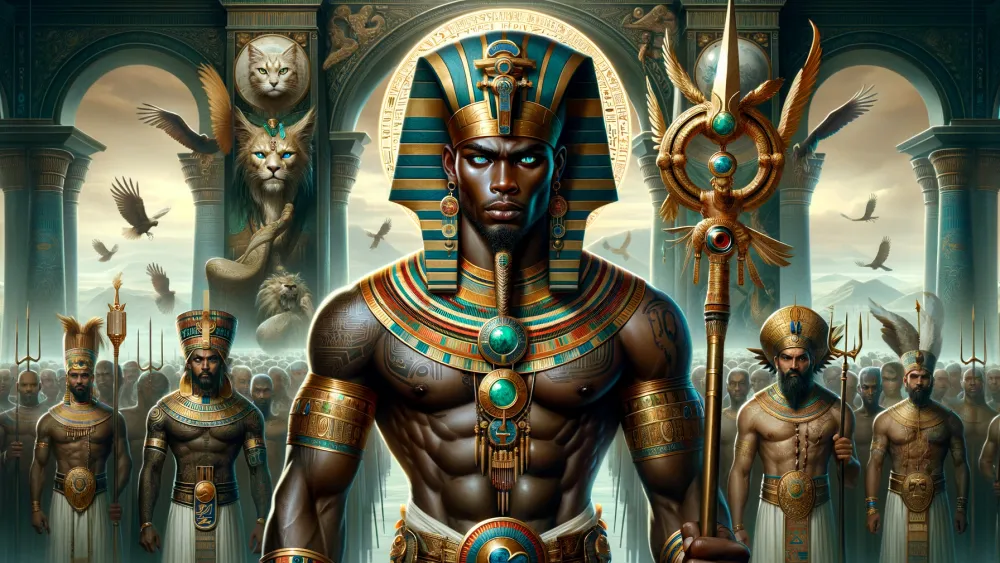
This comparison helps us see how Reshep’s identity was shaped by and connected with other gods. Examples of Syncretism:
- Egypt: Mixed with Seth
- Levant: Linked with Baal
- Mesopotamia: Similar to Nergal
Syncretism influenced Reshep’s identity by blending him with other gods like Seth, Baal, and Nergal, which increased his popularity and diversified worship practices.
The Worship and Cult of Reshep in Different Regions
Whenever Reshep’s worship spread to different regions, each place had its own way of honoring him. In ancient Egypt, for example, Reshep was mainly venerated during the New Kingdom period (around 1550–1070 BCE), and he was often linked with the god Seth. Egyptian rituals included offerings of food, drink, and incense, along with prayers for protection and healing.
Meanwhile, in the Levant (modern-day Syria and Lebanon), Reshep was a big deal in Ugaritic religion. Here, people performed sacrifices and elaborate ceremonies to get his favor in war and health matters. In Mesopotamia, although Reshep wasn’t as central as in Egypt or the Levant, he was still recognized and sometimes mixed up with local gods like Nergal.
Temples dedicated to Reshep were super important for his cult, acting as hubs for worship and community events. Major temples were found in cities like Byblos and Ugarit (in the Levant), where they became focal points for religious activities. Priests dedicated to Reshep had specific jobs, like performing rituals, offering sacrifices, and interpreting omens.
These priests also took care of the temple and its grounds, making sure the sacred space stayed pure and ready for worship. In Egypt, priests might have also been involved in state-sponsored ceremonies because Reshep was associated with royal power and military success.
Reshep’s Influence and Legacy
While Reshep was worshipped in many different ways across various regions, his impact went far beyond those areas. So, let’s check out how his legacy continued to shape different cultures and religions.
Reshep’s Spread into Ancient Egypt
Reshep’s arrival in Egyptian religion happened during the New Kingdom period (around 1550–1070 BCE), a time when Egypt was in close contact with the Near East through trade, war, and diplomacy. This cultural exchange made it easier for Reshep to become part of the Egyptian pantheon.
Initially, he looked a lot like his Near Eastern versions, often shown as a warrior god with a mace and shield. But over time, his image changed to fit Egyptian styles more closely. For instance, he started being shown with the traditional Egyptian kilt and crown, which showed how he was blending into local religious practices. Worship practices also changed, adding Egyptian rituals like offerings of food, drink, and incense.
In Egyptian mythology, Reshep had a special role that often mixed with other gods. Specific myths and stories about Reshep highlight his dual nature as both a bringer of plague and a healer. For instance, one story talks about Reshep protecting the pharaoh in battle, showing off his warrior side. At the same time, Reshep was sometimes linked with the god Seth, who was also connected to chaos and foreign lands.
This link helped Reshep fit into the Egyptian religious scene even more. He also interacted with other gods like Montu (the Egyptian war god), showing how versatile he was and how he could fit into different parts of Egyptian mythology.
Reshep’s integration into Egyptian religion during the New Kingdom period involved a blending of Near Eastern and Egyptian characteristics, which allowed for his evolution and adaptation within the Egyptian pantheon, incorporating elements such as attire and rituals while encompass a dual nature that aligned with various Egyptian deities.
Reshep in the Hebrew Bible and the Worship of Yahweh
References to Reshep in the Hebrew Bible are a bit indirect but still interesting. For instance, Habakkuk 3:5 says, “Before him went pestilence, and plague followed at his heels.” Some scholars think the word “pestilence” (Hebrew: resheph) might actually refer to the god Reshep, given his link to plagues and disease.
Another possible mention is in Deuteronomy 32:24, where “resheph” is translated as “fiery bolts” or “burning heat,” possibly hinting at Reshep’s destructive side. These interpretations suggest that people back then knew about Reshep and possibly used his imagery in their texts. As for the relationship between Reshep and Yahweh worship, it’s pretty complicated and has sparked a lot of debate.
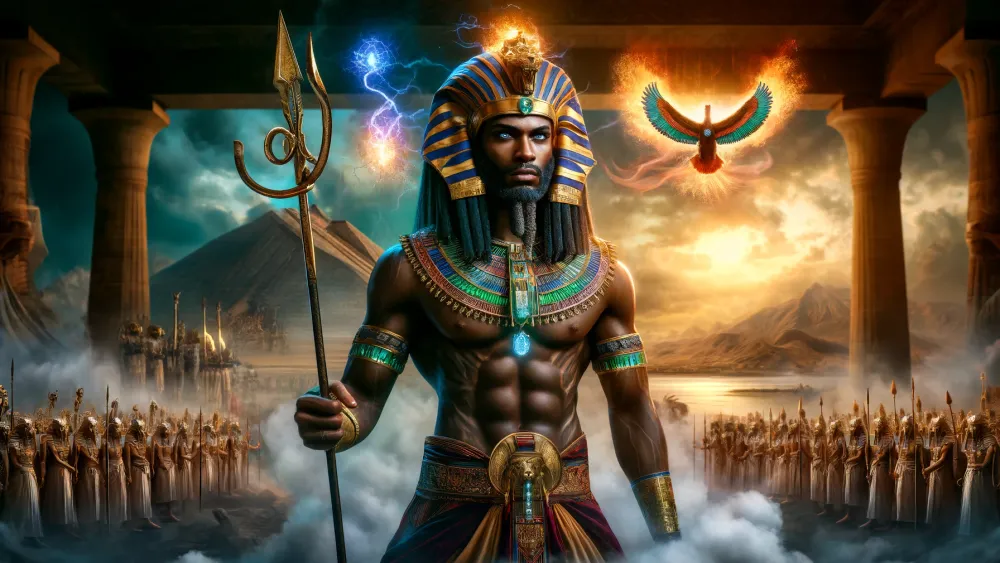
Some scholars believe there was some blending, where traits of Reshep got mixed into the worship of Yahweh. For example, Yahweh is sometimes shown as a warrior god who can bring both destruction and healing, much like Reshep. This overlap might mean that Yahweh’s followers borrowed some elements from Reshep’s worship. Historically, this blending could have happened during times of cultural exchange and conquest when different religious traditions met.
Theologically, mixing these traits might have helped shape the idea of Yahweh as a god who could be both wrathful and merciful.
The Hebrew Bible may contain indirect references to the god Reshep, which could suggest a potential influence on the worship of Yahweh and the conception of him as a deity capable of both wrath and mercy.
Pantheon of All the Egyptian Mythology Gods
If you want to dive into the many gods and goddesses in Egyptian mythology, check out this list of all the Egyptian gods. It covers the major deities and their roles in ancient Egyptian religion.
FAQs
1. Who was Reshep in ancient mythology?
Reshep in ancient mythology was a deity associated with war, plague, and healing, venerated in various Near Eastern cultures including Syria and Egypt.
2. How was Reshep depicted in ancient art?
Reshep was depicted in ancient art as a warrior god often shown wielding weapons like a mace or spear, and sometimes accompanied by symbols of plague and healing.
3. What were the main attributes of Reshep?
The main attributes of Reshep included his association with warfare, plague, and healing, often symbolized by weapons like the bow and arrows.
4. How did Reshep’s worship spread to different regions?
Reshep’s worship spread to different regions through cultural exchanges and trade routes connecting ancient Near Eastern civilizations.

